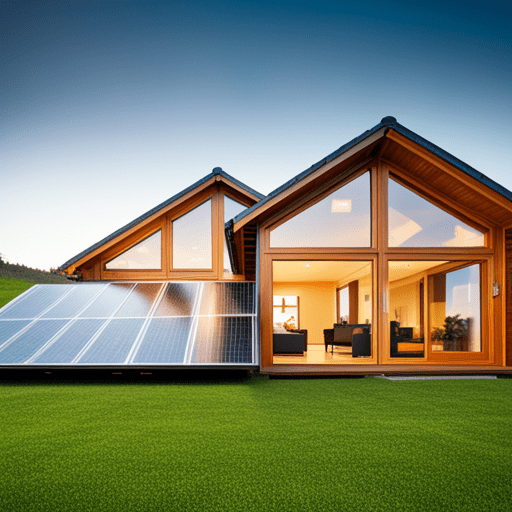Homes are all about comfort—but they also play a significant role in our energy use and sustainability. A home’s energy efficiency can directly influence its environmental impact, as well as how much it costs to heat and light it. That’s why it’s important for homeowners to understand the connection between their living spaces, energy use, and sustainability.
Homeowners can improve their home’s energy efficiency in many ways. For example, using smart technology to optimize the temperature and lighting can reduce energy waste. Installing insulation materials like double-glazed windows or foam board insulation can also help hold heat inside during colder months. Additionally, investing in renewable energy sources like solar panels or wind turbines can help reduce your home’s reliance on non-renewable energy sources.
Making an effort to optimize your home’s energy use and sustainability doesn’t have to mean compromising on style or comfort—and it doesn’t need to break the bank either. With the right approach, homeowners can achieve a balance between energy efficiency and artful living.
By considering energy use when decorating and furnishing your home, you can make an impact on sustainability without sacrificing style. Investing in LED lightbulbs or dimmers, for example, can reduce light pollution while helping to conserve energy. Additionally, choosing responsibly-sourced materials and furnishings can also help reduce your environmental footprint.
Making even small changes to how you run and decorate your home can have a big impact on energy use and sustainability in the long term. When approached with creativity, living sustainably can be an enjoyable art form—and one that makes a difference too.
Making smart and sustainable choices when it comes to energy use in your home doesn’t have to mean sacrificing comfort or style. With a bit of planning, you can create a space that is both beautiful and responsible. That way, you can enjoy the art of living while making a positive impact on the environment too.
By understanding the connection between home, energy use, and sustainability, you can help create a better future for yourself and your family. And who knows—maybe your efforts will even inspire your friends and neighbors to follow suit!
With these considerations in mind, we hope that you have enjoyed learning about energy and sustainability in the context of home and art. Thank you for taking the time to read this article, and good luck in your efforts to create a beautiful, comfortable, and sustainable living space!
SHADES OF GREEN -2006 Passport Magazine Building green can be daunting for those of us who are new to the technologies, so Passport turned to building pro Steve Schappert for tips on how to navigate the process.
The Rise of Art in Sustainable Living
Why is solar power better for your health?
Residential Solar Power in Connecticut
Tea Bags Found to Contain Billions of Microplastics A new study finds that when heated to 203 degrees Fahrenheit, even a single plastic tea bag can release up to 11.6 billion microplastic particles.
UK University Halts Sale of Beef Products at Campus Eateries
Are Your Fruits and Veggies Better Cooked or Raw?
Inhabitat Tests Zero Waste, Zero Energy Espresso Machine from Rok
New York Approves Bill Setting Climate Goals for 2040
4 Green Habits to Adopt This Earth Day
10 Fascinating Facts About Earth
7 Eco Friendly Habits That Aren’t So Green
5 Surprising Products That Are Damaging the Environment

